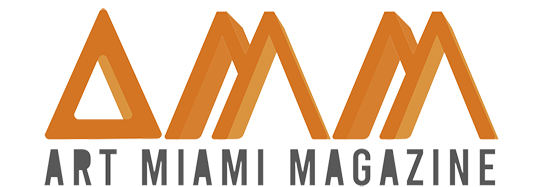9 Steps to Become a Freelance Artist (and Crush It) in 2022
Being a freelance artist is shrouded in stereotypes. You’ve probably heard the term “starving artist” enough to last a lifetime.
The truth is the starving artist stereotype is outdated, proven false by millions of freelance artists around the world who are making good money doing work that fulfills them.
I won’t tell you becoming a freelance artist is easy. It takes a lot of hard work and dedication.
But it is 100% possible.
Thanks to the Internet and an ever-growing need for visual content both online and off, there are more opportunities to make money as an artist than ever before.

*********
Nick’s Notes: Preston Lee contributed this post. Preston is the founder of Millo, an 8-year side-hustle that finally became his full-time business. He and his team help freelancers get clients and grow their business.
If that name sounds familiar, he was featured in episode 300 of The Side Hustle Show!
*********
Whether you want to become a full-time freelance artist or pursue art as a side-hustle, the world needs the art you have to offer.
This post will outline 10 steps to becoming a freelance artist—with tips and advice that have worked for artists before you.
Here are 9 steps to become a freelance artist in 2020:
Table of Contents show
1. Start with a Business Model
The biggest mistake most artists make when going freelance is failing to understand and decide on a business model.
As a freelance artist, you have two critical jobs:
- Make Art
- Run (and Grow) a Business
If the second job on the list sounds dreadful to you, I suggest you stop now and look for a job working for a company as an in-house artist. You’re not ready to be a freelancer and run your own business.
There’s no getting around it. If you want to thrive as a freelance artist, you can’t phone in the second job—running and growing your business.
Luckily, there are plenty of ways to make money as an artist in today’s world.
Decide on a Basic Business Plan
You don’t need to put together a 50-page business plan with financials, monthly tasks, projections, and other details. In fact, if you try to start that way, you’ll probably never make the leap to becoming a freelance artist.
But “making art first and monetizing later” should not be your business strategy.
Instead, take time to review ideas on how to make money as an artist and decide on one or two that you’ll pursue from day one.
Deciding on a business plan means determining what kind of work you’ll primarily offer.
Are you a fine artist? A graphic artist? A cartoonist? An illustrator? A musician?
What media do you work with? Are you a digital artist? An environmental artist?
Answering questions on who you are and what you offer is critical in moving on to step two of this process.

2. Find Your First Few Clients
Remember how I said you have two primary jobs as a freelance artist? Well, you literally can’t do the second job (run a business) until you have clients.
Clients are the definitive line between an artist who has a nice hobby and a freelance artist who has a business.
To get your first freelance art clients, start with these simple steps:
Tap Into Your Personal Network
Talk to family, friends, coworkers, fellow artists, and others in your network, letting them know that you’re currently offering work as a freelance artist. New clients will come out of the woodwork if you do this long enough.
Search Freelance Art Job Sites
Depending on the kind of art you want to sell, there are thousands of new job listings for freelance artists on all kinds of sites around the web each month.
For example, a quick search on FlexJobs, LinkedInJobs, Jooble, or Glassdoor reveals art jobs with well-known companies around the world.

(Save 30% on your FlexJobs membership w/ promo code FLEXLIFE.)
Do Some Strategic Pro Bono Work
While you should avoid doing too much work for free, finding the right strategic pro bono work in the early days of your freelance art career can pay off big-time down the road. Try targeting organizations and companies who have robust networks (hello, word-of-mouth referrals) or long-term art needs (great for future paid work).
Finding freelance clients can be a tedious process filled with rejection. Take courage, however, because as you practice, you’ll get better at it and begin to enjoy it more.
3. Build a Basic (but Powerful) Portfolio
As you begin working to find your first few freelance art clients and build a nice solid base on which you can grow your business, it’s time to create a simple portfolio.
Notice, I have emphasized “basic” and “simple” when it comes to creating your portfolio.
As an artist, you’ll have a tendency to want to go overboard with your portfolio—making it the most impressive thing anyone has ever laid eyes on.
And while that could be really great for business (debatable), it will also take a really long time.
The goal of this process is to get your freelance artist career started and humming along quickly so you don’t burn out and give up.
But building a simple portfolio doesn’t mean it has to be weak. Even with just one or two total pages on your portfolio site, you can still create a client-converting portfolio that will grow your business reliably.
With that in mind, here are a few tips I have for building your first portfolio:
Make in Online-Only at First
While your art may be more impressive in person, word can spread faster online which means focusing on your online portfolio first offers some definite advantages.
You can use a service like Wix or Squarespace to quickly and easily set up a nice looking portfolio to get yourself started.
Keep it 1-2 Pages
It can be tempting to create a whole list of pages you want to include in your portfolio:
- about me
- contact
- work
- my story
- my philosophy
- and on and on.
But don’t. In the beginning, keep it simple and reduce your pages to one (or maybe two) that focus entirely on capturing new clients (more on that next).
Focus on Client Conversions
Instead of focusing on how pretty your portfolio looks, make sure you concentrate on whether or not this portfolio will convert site visitors to paying clients.
Avoid any weird dead ends (like light boxes or empty pages) or off-ramps (like social media buttons or blog links) that take visitors away from your primary goal: getting them as a client.
4. Create, Create, Create
Remember I said you had two jobs as a freelance artist? To build your business yes (we’ve been doing mostly that so far) and to make art.
Now comes the time where you make art…a lot.

Start working on projects for the clients you’ve booked and the pro bono opportunities you secured in step 2. These pieces will eventually fill up the portfolio you built in step 3.
Most importantly, the work you do for clients now will lead to future work and word-of-mouth referrals from current freelance clients.
Many new freelance artists are tempted to start with this step: make, make, make. And while you should, of course, have some background in art to know it’s what you want to do for the long-term, far too many would-be freelance artists never actually get their creative business off the ground because they spend all their time on job 1 (making art), and no time on job 2 (building their business).
For this reason, I left “make lots of art” all the way until step 4 when you have the basic foundation of a freelance art business laid and you’re ready to move forward.
5. Deliver a Highly Satisfying Experience
As you continue to balance both jobs of being a freelance artist, you should focus on both sides of your work:
Making perfect art vs. satisfying a client perfectly.
There are dozens of arguments we could get into when it comes to balancing your art with your business.
For example, some artists consider it “selling out” to adjust your creative work based on client feedback. And while that may be fine and good for a well-known fine artist who has paid their dues, it’s a different story if you’re just getting started as a freelance artist.
In the early days of your freelance art business, you’ll want to focus on client satisfaction—sometimes even at the expense of your own artistic taste.
Why?
Because satisfied clients are the bedrock of a solid freelance art business. Satisfied clients refer you to other clients, which ultimately saves you from having to do endless outreach just to find more work.
Constraint Breeds Creativity
If you’re concerned about letting a client have too much say in your artistic process, think of it this way:
Part of the creative challenge of being an artist is to work within the confines of the work itself. For painters, they’re limited to their canvas of choice. For photographers, they’re limited to their surroundings. And for freelance artists, you must work and create within the confines of the client’s creative brief or guidelines.
The more you focus on client satisfaction, the faster your business will grow. And the faster it grows, the more flexibility you’ll ultimately have.
A young freelance artist with no work can’t assert their artistic liberty on a client nearly as easily as a seasoned, high-demand artist who’s booked out for months.
This leads me to my next piece of advice…
6. Don’t Get Too Selective Early On
If you’ve done much research about getting your first art clients, you’ve probably heard more seasoned artists tell you to “raise your rates” or “charge what you’re worth.”
This advice can be harmful.
Why? Because it leads freelancers to get too picky too early.
In the early days of your freelance art career, the key is to get as much business in the door as possible.
While it may be tempting to chase prestige and huge paychecks as a young artist, history tells us that those things are earned over time—not handed out early on as a reward for simply showing up.
Instead of being overly selective about the types of clients and projects you’ll work on, try to take on as many projects as you possibly can. This singular action will help you accomplish a few critical things:
You’ll Learn What You Like (and Dislike)
By taking on a wide variety of projects and clients, you’ll learn what you like and dislike so, later in your career, you can get more picky.
You’ll Build Up a Nice Foundation
If you take on a high number of (maybe) lower paying projects in the early days of your freelance artist career, you’ll be able to build up a nice foundation of both money and experience.
Set aside some of your money so you can, ultimately, begin to be more selective about projects, turning down clients that don’t match your mission.
And set aside your very best pieces into your portfolio in order to land more of the kinds of clients you want.
After you’ve built up a nice foundation of revenue and client projects, you should begin to be more selective about what kinds of clients you’re attracting. Eventually, if done correctly, this is how highly paid freelancers end up raking in big clients.
7. Find Another Round of Clients (and Keep Them!)
You might think I’m sounding like a broken record here: find clients, then find clients, then find clients.
But the truth of the matter is, if you don’t want to end up becoming subject to the feast-famine cycle that eats up so many freelance artists, you have to focus on consistently getting clients in the door.
Here are a few things you might consider doing to continually attract new freelance clients:
- Set up alerts on freelance job sites to notify you when new freelance art jobs become available.
- Partner with an agency, offering to take on any run-off work for them or their clients.
- Nurture and grow your professional network both online (like on Linkedin) and off (like with local meetups).
You’ll quickly find that part of the secret to staying booked out with clients far into the future takes two key things:
- A constant flow of new interested clients
- A way to convert them to monthly recurring clients (instead of one-off jobs)
For a more in-depth look at how to accomplish both of these objectives, I suggest you read this list of suggestions from 20 pro freelancers who have figured it out.
8. Diversify Your Income Streams
Once you’re humming along as a freelance artist with a steady stream of clients and revenue, you may want to consider diversifying your income streams.
Relying solely on client revenue has its advantages and disadvantages—its biggest down-side perhaps being that it’s all “active” revenue, meaning you only get paid when you’re actively working.
On the flip side, many artists are finding way to generate additional more passive income with their art.
Here are just a few examples to get your mind going:
- Turn your best art into merchandise you can then list for sale with tools like Printful or Merch by Amazon.
- Use your talent to create digital bundles or other assets you can sell on marketplaces like CreativeMarket.
- Use a platform like Udemy or Skillshare to teach courses to other artists who want to learn how to create the kind of art you do.
By diversifying, you’re adding stability and longevity to your business. You’re also giving yourself some wiggle room so you don’t become trapped by creating “just another job” for yourself as a freelance artist.
If you don’t rely 100% on client work, you’re free to take more time off, plan for the future, and get more picky about the clients you do take on.
It’s a major win.
9. Master the Skills it Takes to Run a Business
Just like it has taken you years (and will take you decades more) to refine your skill as an artist, becoming a good entrepreneur or freelancer takes time, hard work, and dedication.
You wouldn’t expect someone to pick up a paintbrush today and immediately paint a masterpiece.
Neither should you expect yourself to become a freelance artist and suddenly run your business perfectly.
It will take time.
In order to do it right, you’ll want to focus on the right skills—the talents needed to excel at business. For that, you can take business courses on Udemy or find a business coach that can help you through the process.
Just like becoming a talented artist, the key is consistency. Stick with it and don’t give up.
Freelance Artists, You’ve Got This!
I’d like to end by telling you what I tell my elementary school art students when I volunteer twice a week:
The world needs your art.
I’m personally saddened by how many people grow up loving art and then ultimately give it up because it’s “not a viable career option.”
Imagine our world without art, without creativity. It wouldn’t be a place I would personally want to live.
Becoming a freelance artist is an incredibly viable and popular way to both put your art out into the world and make a good living. Using the steps I’ve outlined above (and studying other resources), I hope being a freelance artist is a path you’ll consider—and even thrive on.
Good luck. You’ve got this!

The award-winning Side Hustle Show is a
Top 10 Entrepreneurship podcast
with over 1,100 5-star ratings!
Like That? There’s More!
Join the 100,000 Who Get My Best Stuff via Email
I’ll also send you my free guide: The 5 Fastest Ways to Make More Money.NameEmail Address
I’m a Hustler!

About the Author
Nick Loper is a side hustle expert who loves helping people earn more money and start businesses they care about. He hosts the award-winning Side Hustle Show, where he’s interviewed over 500 successful entrepreneurs, and is the bestselling author of Buy Buttons, The Side Hustle, and $1,000 100 Ways.
His work has been featured in The New York Times, Entrepreneur, Forbes, TIME, Newsweek, Business Insider, MSN, Yahoo Finance, The Los Angeles Times, The San Francisco Chronicle, Hubspot, Ahrefs, Shopify, Investopedia, VICE, Vox, Mashable, ChooseFI, The Penny Hoarder, GoBankingRates, and more.
LAST UPDATED JUNE 25, 2021
7 thoughts on “9 Steps to Become a Freelance Artist (and Crush It) in 2022”
- Kayla Burnen













